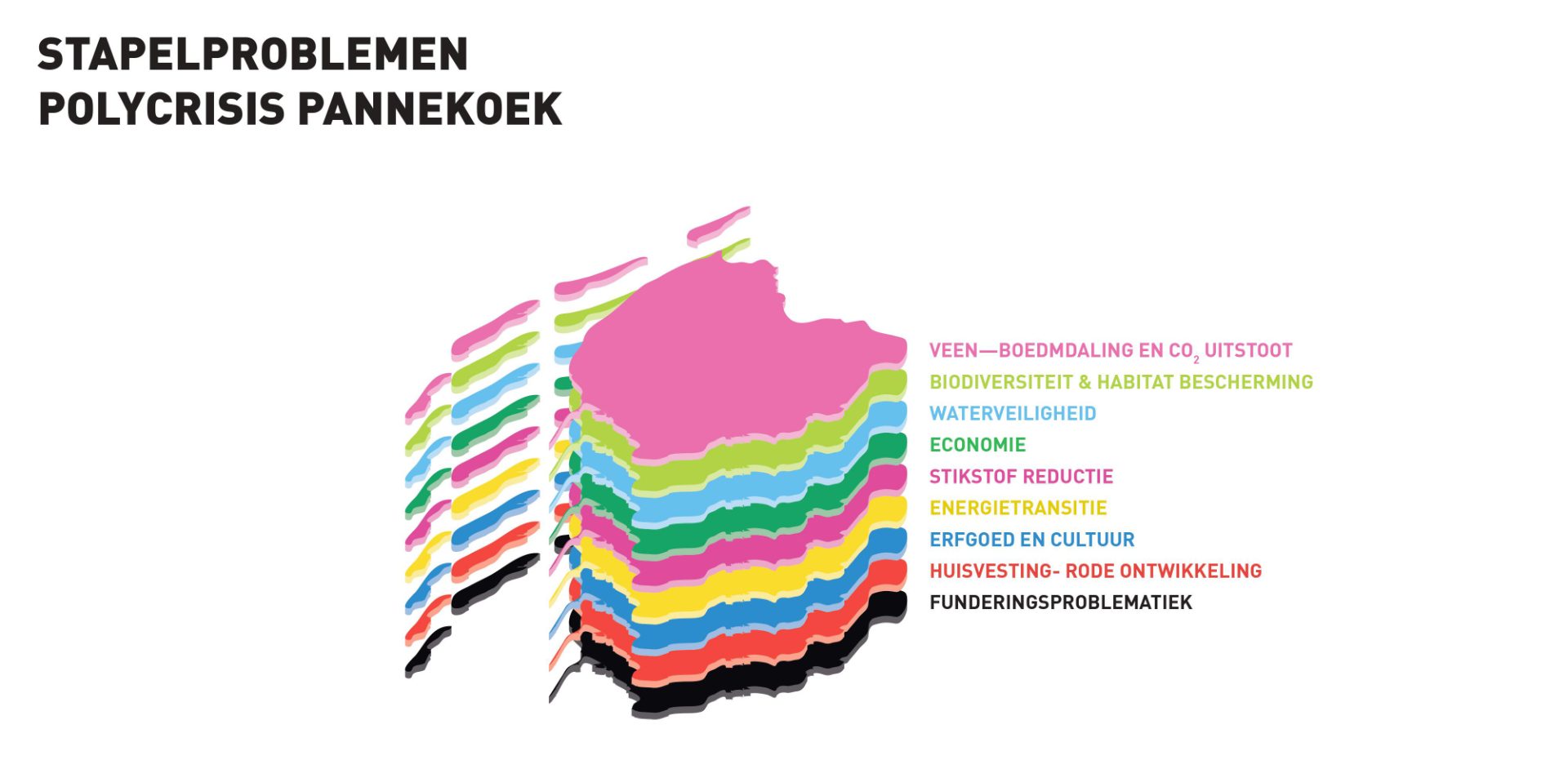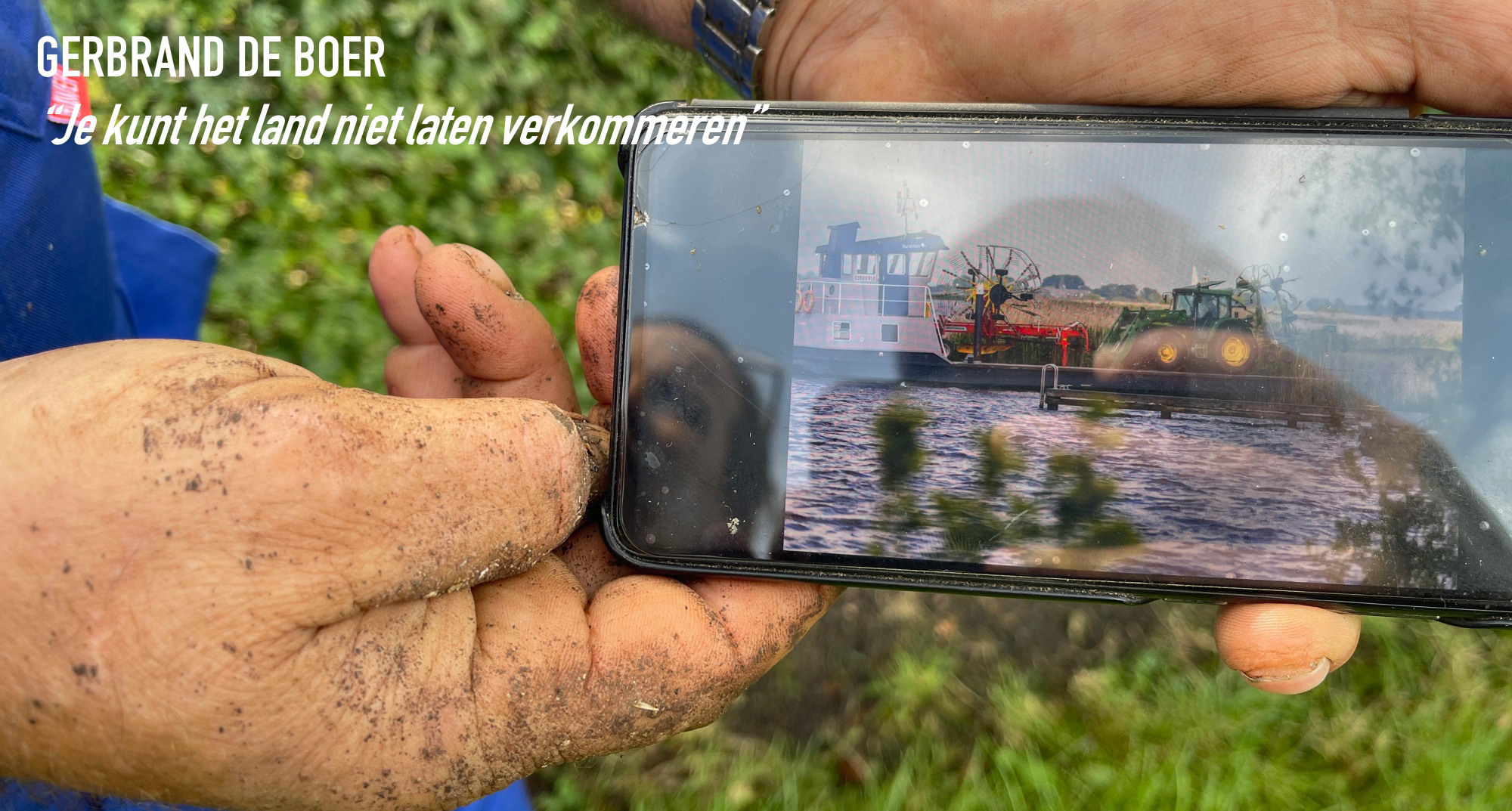Eva Pfannes of OOZE Architects: “Peat is a superhero.”
Water systems aren’t very sexy. Just think of a sewer or water treatment plant in an industrial estate on the edge of the city. Because these systems are so invisible, or even unattractive, we don’t like to think about them, according to Eva Pfannes of OOZE Architects & Urbanists.
With her agency, she is trying to bring about a mental change. For example, Eva and her partner Sylvain Hartenberg and their colleagues Hsoc Mathai George and Takuma Johnson have already created an attractively designed water treatment plant for a schoolyard in Chennai, India. This water installation looks more like a water park. “Instead of hiding the challenges of water purification, we want to arouse people’s curiosity,” she says. And it works: It attracted the media, the residents are proud of it, and more schools in India want to participate. In the Frisian Veenweidegebied (peat meadow area), OOZE applies this proven strategy to tackle the future issues of this area.

Systemic thinking with local application
OOZE’s strategy is characterised by both large-scale and local thinking. “We connect fields such as climate change mitigation and adaptation, energy transition and new ways of shared management and ownership, and look at how we can shape a new system,” says Eva. “At the same time, you can apply this locally and in a speculative way using demonstration projects.” OOZE works with nature-based solutions, such as water treatment systems with helophyte filters (constructed wetlands), which are made from marsh plants that purify water.
The agency has developed and applied this method over the past 15 years in various urban areas, in India and Brazil, to tackle local water challenges. Although the Veenweidegebied is not an urban area, it has a lot of water and, according to Eva, has close links with the city, “because food is produced here that is eaten and consumed in the cities”.
Peat as a superhero
There are more similarities between the projects in India and those in Fryslân, however. Both areas suffer from water shortages and water pollution. While in the city of Chennai in India it is about harvesting rainwater, treating waste water and limiting flood risks, the water challenges in the Frisian Veenweidegebied have changed significantly in the last five years due to the climate crisis. All of a sudden, there are also water shortages in this area as well as ground water pollution with nitrogen. To come up with ideas for a systemic change, OOZE first researched the original character of the peat meadow area, to understand the landscape itself and the scale of the landscape.
“The Veenweidegebied used to be a very large wetland” says Eva. “A landscape which captured a huge amount of CO2 and where the purification of water is a highly integrated natural process.” The peat meadow is still a great carbon storage: worldwide, peat deposits store twice as much carbon as woodlands, while they only cover a tenth of the surface of all forests worldwide.
“Peat is a superhero,” according to Eva. “But at the current rate of draining peatlands, the soil is disappearing at the rate of 1 cm per year. That is why it is very important that we work to strengthen the retaining capacity of peat, to keep stored carbon in the soil and prevent it from reacting with oxygen, causing it to be released into the air as CO2.”

Nine transition tasks
There are nine important transition tasks in the Veenweidegebied: Peat (CO2 reduction and subsidence of the land), water management, pollution (particularly nitrogen), biodiversity, the energy transition, a new circular economy, heritage, housing and foundation problems. OOZE has created a powerful visualisation of these stacked problems, called “polycrisis pancake”.
Thinking in decades
In order to give new, sustainable systems a chance, Eva believes it is important to shift our time horizon. “Governments works with regulatory term of five or ten years, and politicians often do not think beyond their own term of office. For example, the incomes of farmers will be compensated for the next ten years. But farmers are used to planning ahead, for periods of thirty or even forty years. They think in generations.”
According to her, this is where our political system clashes with the idea of sustainable future thinking. “Of course there are more obstacles: such as our economic system, that is focused on growth and our dependence on the global market.” Within such a complex dynamic, OOZE wants to answer the question: How can we bring about change and what role can creativity and design play?
Collaboration with the province
This systemic thinking, a method OOZE excels at, fits perfectly with the collective character of the Veenweide Atelier. They have also proven themselves with the attractive pilots and demonstration projects they created, which drive larger changes and physically demonstrate the changes that are taking place. In Fryslân, OOZE and the Veenweide Atelier are joining forces in a number of existing pilot projects in the province, such as in the Hegewarren Polder and in Aldeboarn De Deelen.
These pilots focus on new revenue streams: retaining carbon, capturing CO2, growing wet crops and creating a new paludiculture chain, and using the beauty of the landscape to earn money through tourism and housing, for example. “We provide input about how these pilots can best be organised and what we can learn from them when we design the area to make it future-proof.”
Thinking beyond the pilot
The pilots are just a start, Eva emphasises. “What is the most exciting for us, is to be part of a bigger picture and help build the future.” They hope they will be given the resources and opportunities to remain involved in the pilots in the Veenweidegebied for the longer term. OOZE does not offer ready-made solutions or certain outcomes. “There is always a level of uncertainty in these types of projects,” Eva explains. “How much more will the sea level rise? How many more storms will we have to endure? But you can focus on working methods that you know will lead to positive change and which we can use to create holistic revenue framework for these areas.”